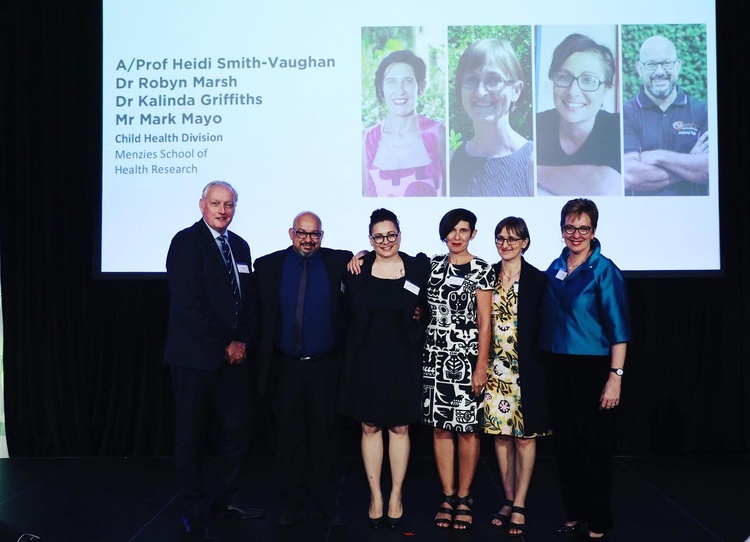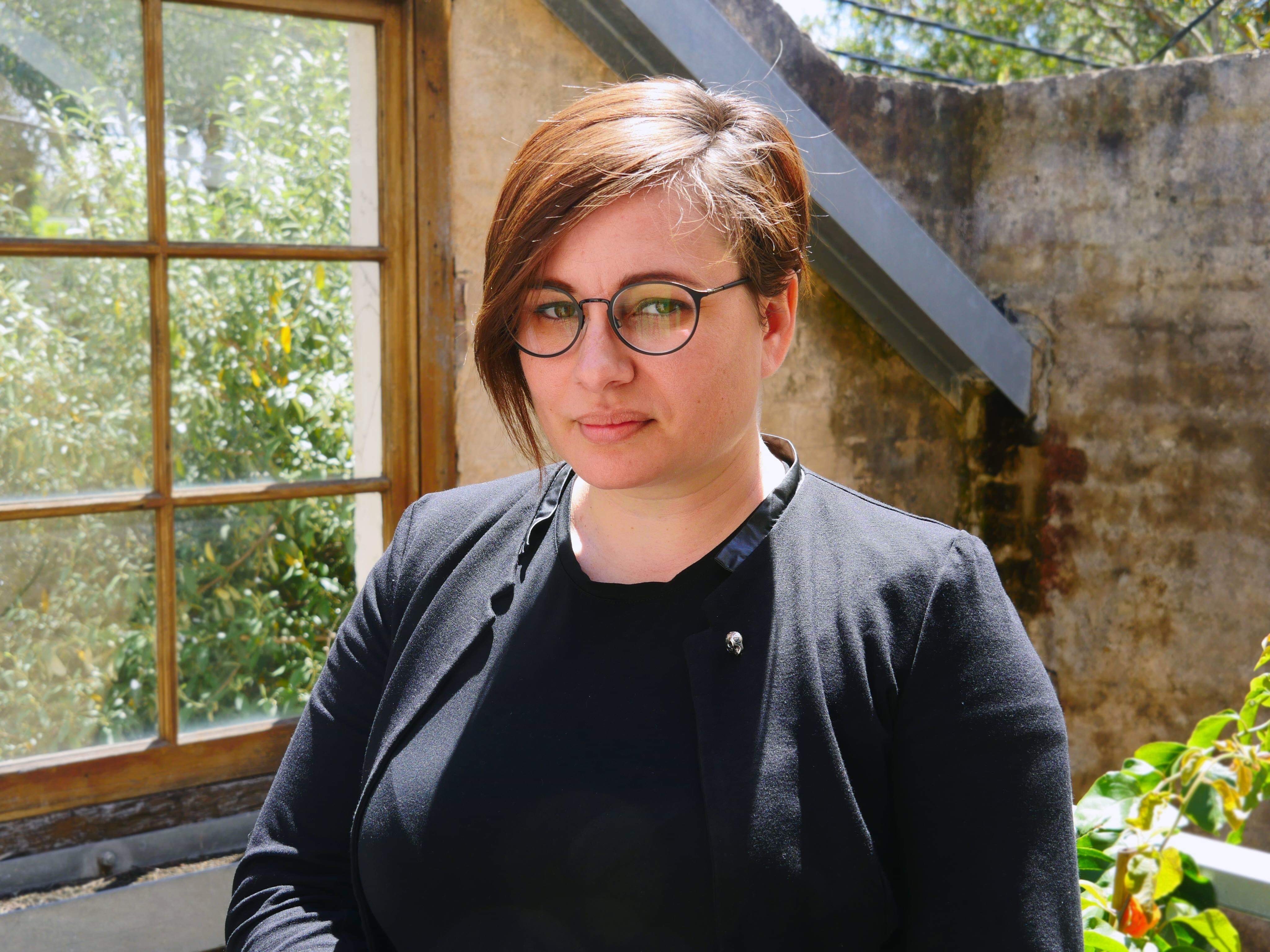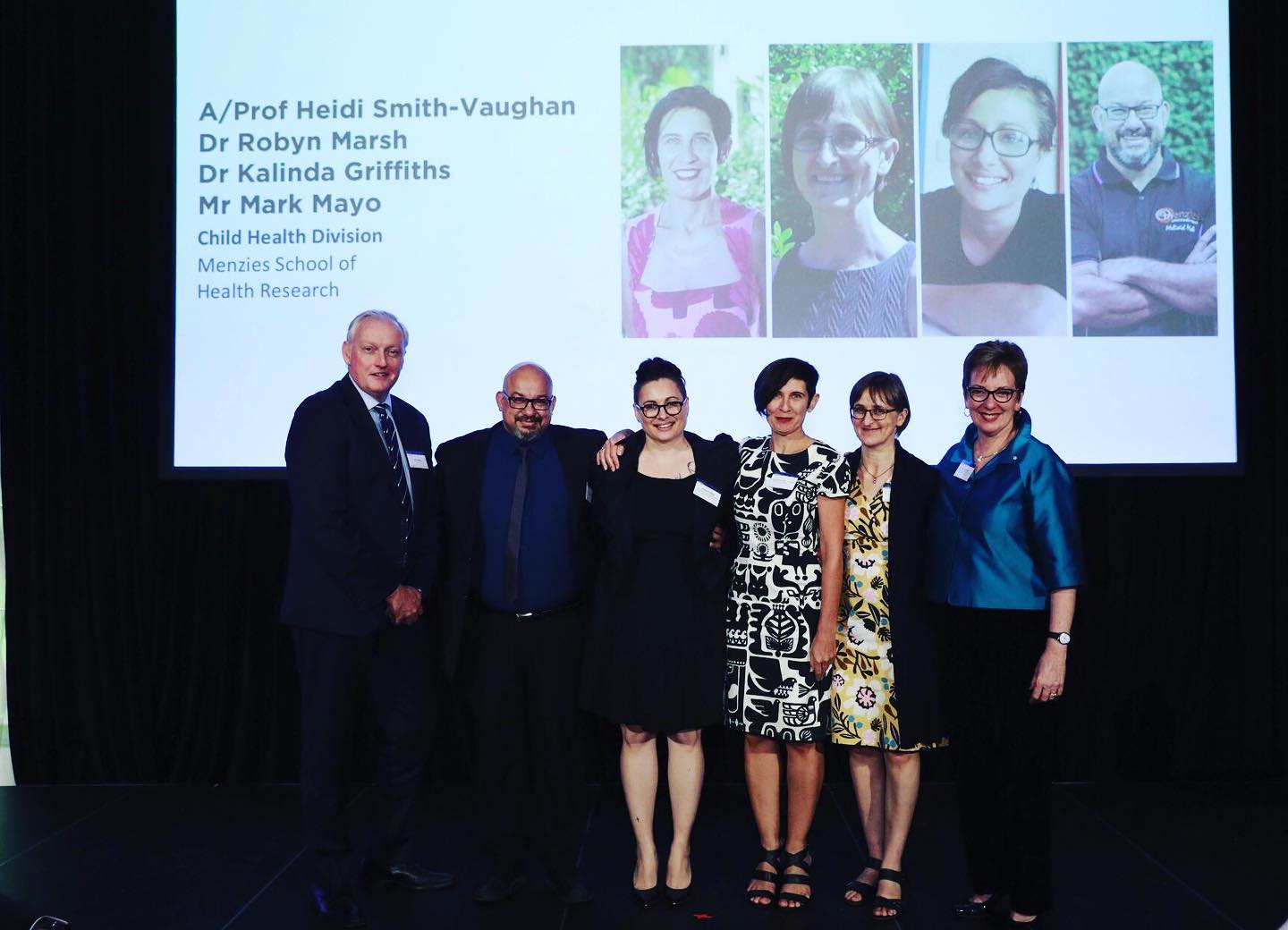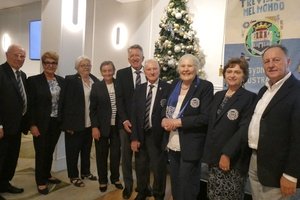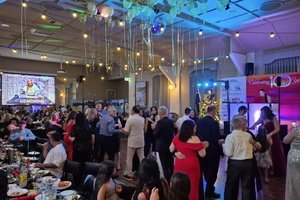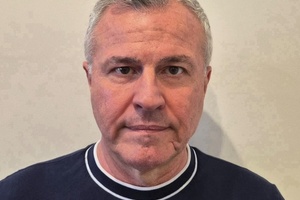It’s a prestigious and competitive award which was established as part of the Clive and Vera Ramaciotti Foundations by Vera Ramaciotti in 1970.
Following the death of her brother in 1967, Vera decided to set up a charitable trust in support of biomedical sciences.
She was influenced by the philanthropic attitude of the Hall family and their establishment of the Walter and Eliza Hall Institute, as well as her own personal struggle with diabetes.
To date, the Ramaciotti Foundations have awarded over $61 million to biomedical researchers who seek to address disease-causing factors, treatments, health services and population level approaches to improving health in communities.
“When we first heard the news, I remember thinking it wasn’t real,” Dr Kalinda Griffiths, epidemiologist and Menzies biomedical research team member said.
“It is incredibly humbling to be given $1 million to do something we are all very passionate about and that we know can make a difference to the lives of many people.”
A Yawuru woman who was born in Darwin, Griffiths is also a Scientia Early Career Research Fellow at the Centre for Big Data Research in Health at the University of New South Wales (UNSW).
The team also includes Mr Mark Mayo, Laboratory Project Manager and microbiologist and Dr Robyn Marsh, microbiologist and Senior Research Officer at Menzies, and is led by Professor Heidi Smith-Vaughan, Head of Child Health Laboratory Research and also a microbiologist at Menzies.
Smith-Vaughan said that the funding will be used to construct the Ramaciotti Centre for Excellence in Building Regional and Remote Biomedical Capability.
The Centre will lead the way in developing a sustainable, local and Indigenous biomedical workforce in regional and remote northern Australia and will facilitate biomedical career progression for regional and remote youth, with a focus on career development for Indigenous youth.
Accepting the award, Smith-Vaughan said that the “centre will support young people into further studies and right through to become industry-ready graduates, to fill the gaps in our regional and remote health and biomedical workforce”.
“Having the Ramaciotti name behind this Centre, will help Menzies build capacity in the delivery of Aboriginal and Torres Strait Islander health services by Aboriginal and Torres Strait Islander health staff and develop a model which can be implemented beyond the Northern Territory,” Smith-Vaughan said.
“[It] will be a game-changer for remote and regional Australia,” Griffiths added.
“It will not only provide pathways for youth to realise potential that they never thought possible, but it will provide positive health, economic and social change where there is the greatest need.
“Shortages in the skilled workforce are one of the main constraints on growth in regional and remote Australia.”
Griffiths said that because there is unprecedented and growing demand for healthcare that addresses complex medical conditions, workforce shortages are felt particularly heavily in the biomedical area.
Unfortunately, urgent demand is often met by recruitment of interstate workers on short-term contracts, resulting in rapid staff turnover which negatively impacts the quality of care.
A lack of mentoring and support for young biomedical professionals also has a tendency to cause unrealistic burdens of expectation and what Griffiths refers to as “career burnout”.
“One of the main barriers to a strong biomedical workforce in northern Australia is a lack of pathways into employment for youth,” she said.
“Our centre will tackle this gap.”
The Menzies biomedical team expressed their gratitude to the Ramaciotti Foundations and Perpetual “for believing in our vision”.
Commenting on the significance of the awards, Perpetual’s General Manager of Community and Social Investments Caitriona Fay said that the Ramaciotti Foundations are proud “to support the continued development of Australia’s biomedical community and honour the almost 50-year legacy of Clive and Vera Ramaciotti”.
Vera Ramaciotti’s father, Major General Gustavo Ramaciotti, came to Australia from Italy as a child with his family in the mid 1800s.
He received his ranking during World War I and later practised in Sydney as a lawyer, acquiring some properties which would later become the monetary basis for the charitable trusts.
“The Ramaciotti Foundations are one of the largest private contributors to biomedical research in Australia,” Fay continued.
“They showcase the importance of building capacity in the sector by funding projects that would not normally attract funds elsewhere, often enabling support to leverage further funding.
“It is remarkable to not only witness the impact philanthropy has in making strides in biomedical research but also the benefits that can be felt by the wider community.”

